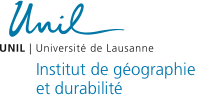Institute of Geography and Sustainability of the University of Lausanne
Research projects
NARRatives On restored Water
| Research fields |
Political ecologies |
| Keywords |
Culture Biodiversity targets OECM Restoration |
| Funding | Swiss National Science Foundation |
| Duration | April 2022 - April 2025 |
| Website | |
| Researchers |
Walters Gretchen (Principal Investigator) [web] [email] Hymas Olivier (Project coordinator) [email] Kelleher Jennifer (International Union for Conservation of Nature) Mustonen Tero (Snowchange Cooperative) Tunón Håkan (Swedish University of Agricultural Sciences) |
In this transdisciplinary and trans-sectorial project, we examine effective biodiversity conservation and climate change mitigation led by Indigenous peoples and local communities (IPLCs) through protected areas (PAs) and "Other Effective area-based Conservation Measures (OECMs). OECMs now form part of the EU 2030 Biodiversity Strategy and the post-2020 Conservation of Biological Diversity targets. In the EU, IPLCs and OECMs may become important in the integration of ecological infrastructure into planning instruments and the extension of PAs. Using a typology of sites in Finland and Sweden in different phases of restoration and representing different governance systems, we seek to understand how these areas, through the active local commitments to restoration and governance vitality, qualify as OECMs. We bring together a partnership of Finnish (SnowChange Cooperative), Swedish (Swedish University of Agricultural Sciences) and Swiss institutions (University of Lausanne) with an international scientific policy organisation (International Union for Conservation of Nature), enabling us to bring local and international perspectives together. Working with different sectors of society (local communities including the Sami, academics, administrative actors, etc) we bring together social and ecological methods to examine the success of locally-led restoration projects. Ultimately, we ask critical and profound questions: what are the ecological, cultural, social and spiritual values that inspire local communities to restore and protect these areas? Why are they important and how are such values determined and reflected in national and international policy contexts? We anticipate that NARROW will help develop new narratives to understanding human relationships to nature from the local to the international while also contributing to EU biodiversity targets.
More information about this project on https://wp.unil.ch/geoblog/en/2022/03/biodiversity-restoration-local-projects-under-scrutiny/

